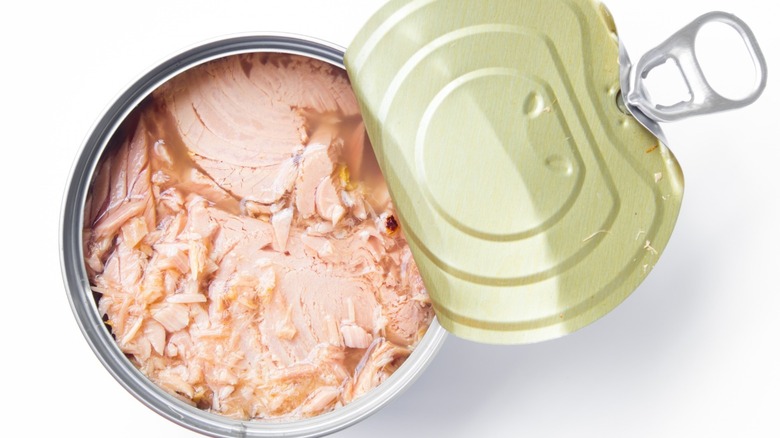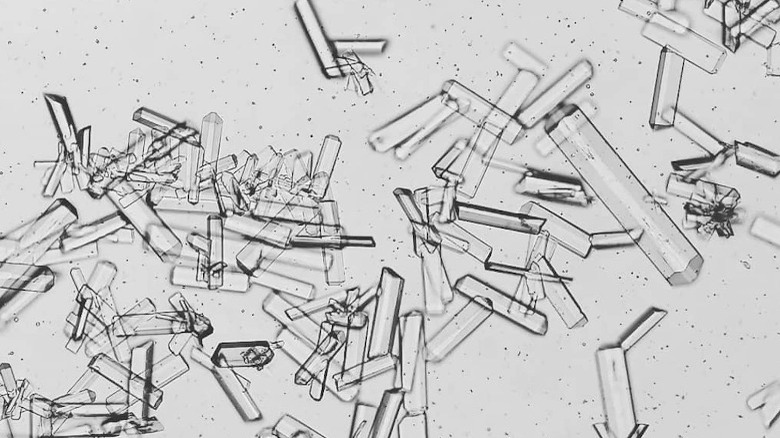Here's What The 'Crystals' In Your Canned Seafood Really Are
Canned foods have long been a staple in kitchen cupboards and pantries all over. Whether your kitchen is stocked with common canned items like soups, vegetables, and beans, or more unusual canned foods such as deviled ham spread, cheese, or haggis, canned foods make for a quick meal, and are handy if you're out of fresh groceries, on a budget, or stuck in quarantine.
Canned fish, in particular, is great to have on hand. Fish is an incredibly healthy food with all sorts of nutritional benefits, including being a good source of protein, vitamin D, and heart-healthy omega-3 fatty acids, according to Healthline. Canned fish is a great alternative to fresh fish (via Mic), and a cheap and easy way to get the weekly 8 ounces of fish as recommended by the U.S. Food and Drug Administration. Besides the ubiquitous canned tuna, other canned seafood options include salmon, sardines, herring, mackerel, oysters, mussels, and more. Canned fish and seafood, however, can sometimes come with something a little extra, in the form of small, glass or crystal-like substances. What are these crystals, and what does it mean for the safety of your food?
Those crystals in your canned seafood are actually struvite
Struvites are a form of magnesium ammonium phosphate, which are naturally occurring minerals in seafood that sometimes bond together to form crystals during the canning process (via Komo News). Struvites can get up to a half inch in size, and are transparent, colorless, and tasteless, reports the Alaska Journal. According to the U.S. Food and Drug Administration, struvites are harmless to consumers.
There are several ways to tell if the crystals in your canned seafood are merely harmless struvites or dangerous glass, explains the Canadian Food Inspection Agency: look under a magnifying glass, and if the edges are smooth, it's struvite, and if it's jagged, it's broken glass; try scratching or crushing the crystals, and if they do, they are struvites; or place the crystals in some warm acid, like lemon juice or vinegar, and if they dissolve, they're struvites. If the crystals are struvite, you can safely eat them, as your stomach acids will dissolve them. So the next time you find any crystals in your canned seafood, don't worry too much about them. You can pick them out if you like, or just eat them along with the rest of your seafood.

